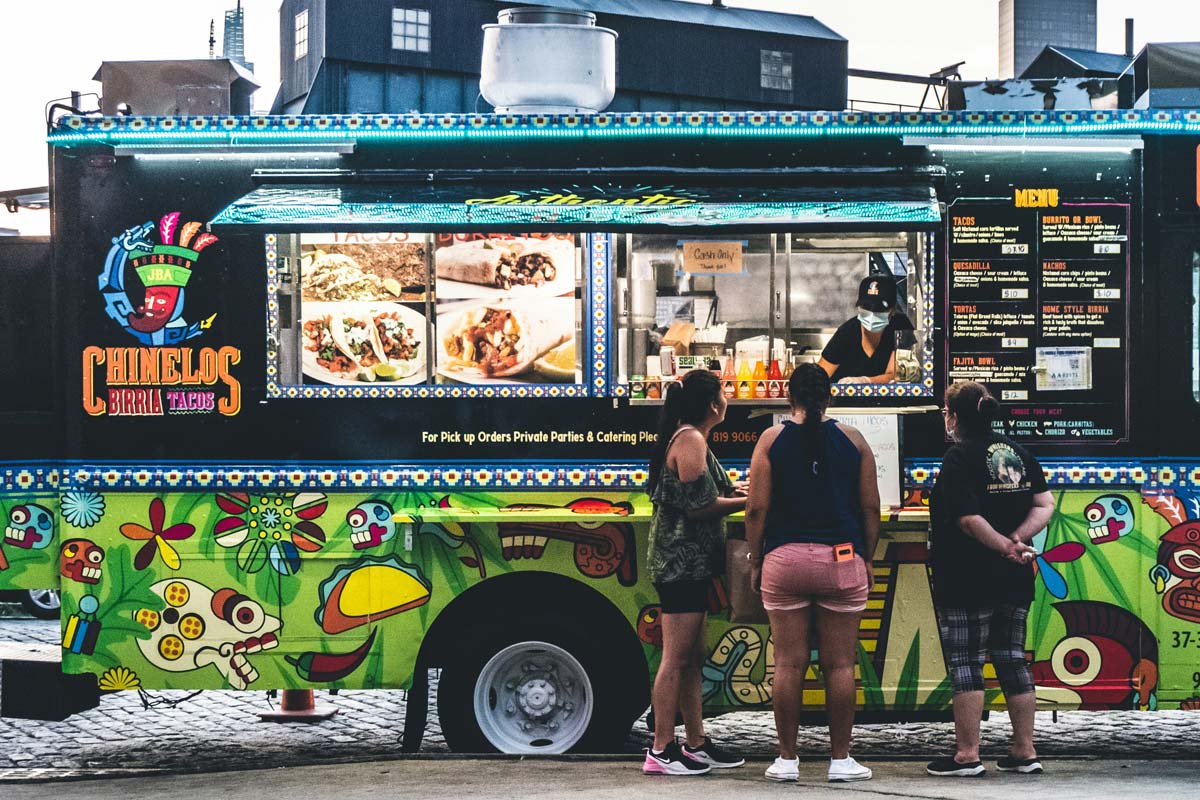Starting a food truck business is an exciting venture, but one of the first and most important decisions you’ll make is choosing the right food truck size. The dimensions of your truck will directly impact your menu, equipment capacity, mobility, and cost. Whether you’re planning to serve gourmet burgers, tacos, coffee, or fusion cuisine, the right food truck size is key to efficiency and customer satisfaction.
In this guide, we’ll break down the most common food truck sizes, how to choose the right one, and what factors to consider before making a purchase.
Why Food Truck Size Matters
- Affects kitchen layout and equipment space
- Influences speed of service and customer volume
- Impacts startup costs and fuel efficiency
- Determines mobility and parking flexibility
Choosing a truck that’s too small can limit your operations, while a truck that’s too big can become a parking and permit headache.
Common Food Truck Sizes and Dimensions
Food trucks come in various lengths—typically between 14 and 30 feet. Here’s a breakdown of the most common food truck sizes:
| Size Category | Length (ft) | Width (ft) | Best For |
| Small | 14–16 ft | 6–7 ft | Coffee, smoothies, ice cream, light menus |
| Medium | 18–22 ft | 7–8 ft | Tacos, sandwiches, burgers, multiple items |
| Large | 24–30 ft | 8–8.5 ft | Full-service kitchens, multiple fryers, grills |
Small Food Trucks (14–16 ft)
Pros:
- Easier to park and maneuver in tight urban areas
- Lower purchase and maintenance costs
- Great for single-product menus (e.g. coffee, churros)
Cons:
- Limited kitchen space
- Fewer equipment options
- May not meet high-volume demand
Best for:
First-time operators, niche offerings, dessert trucks, or beverages.
Medium Food Trucks (18–22 ft)
Pros:
- Balance between space and mobility
- Room for fryers, griddles, small ovens
- Serves a broad menu without overwhelming size
Cons:
- Still requires some parking considerations
- Can feel cramped with multiple staff during rushes
Best for:
Taco trucks, burger joints, grilled cheese vendors, loaded fries, or Asian fusion menus.
Large Food Trucks (24–30 ft)
Pros:
- Fits commercial-grade kitchens
- Supports multiple staff members simultaneously
- Ideal for catering or high-volume events
Cons:
- Harder to maneuver in city centers
- More expensive to insure, fuel, and repair
- May require special permits
Best for:
Experienced vendors, full-menu trucks, BBQ trailers, or catering businesses.
Other Size Considerations
Trailer vs. Truck
- Food trailers can be 8–30 ft long but must be towed.
- Easier to detach and park.
- Popular in festivals and semi-permanent locations.
Interior Height
- Standard interior height is 6’6” to 7’.
- Consider roof height if your staff is tall or needs vertical equipment.
Kitchen Equipment Space
Larger trucks can accommodate:
- Dual fryers
- 36″+ griddles
- Full-size refrigerators
- Exhaust and hood systems
Small trucks may need to compromise or choose multi-functional equipment.
Permitting and Regulation Tips by Size
| Size | Permit Challenges | Notes |
| Small (14–16 ft) | Minimal zoning issues | Easier to comply with local ordinances |
| Medium (18–22 ft) | May need vendor/cart license | Common in most urban areas |
| Large (24–30 ft) | Special event or mobile kitchen license | May require commercial vehicle permit |
Pro Tip: Always check local codes for parking, fire suppression systems, exhausts, and propane usage.
How to Choose the Right Food Truck Size
- Menu Size & Complexity
A smoothie truck needs less space than a gourmet burger setup.
- Staff Requirements
Will you have 1, 2, or 3 people working at once?
- Target Location
Urban downtown vs. fairs and festivals.
- Budget
Small used trucks: $30,000–$50,000
New medium trucks: $70,000–$100,000+
Custom large trucks: $100,000–$200,000+
- Growth Plans
Are you testing a concept or ready to scale?
Real-Life Examples of Food Truck Sizes
| Food Type | Typical Truck Size | Example Equipment |
| Coffee & Tea | 14–16 ft | Espresso machine, sink |
| Tacos & Wraps | 18–20 ft | Griddle, steam table |
| Burgers & Fries | 22–26 ft | Grill, fryer, fridge |
| BBQ & Smokehouse | 26–30 ft | Smoker, grill, cooler |
| Vegan Bowls | 18–22 ft | Prep table, fridge, blender |
Conclusion
Choosing the right food truck size is a vital decision that can make or break your mobile kitchen’s efficiency and profitability. Whether you need a compact coffee truck or a full-scale gourmet kitchen on wheels, matching your truck’s size to your business goals, menu, and budget will set you up for long-term success.
Evaluate your menu, staff size, and parking limitations carefully—and when in doubt, start smaller and scale with success.
FAQs
1. What is the standard size of a food truck?
Most food trucks range from 16 to 26 feet long and 7 to 8.5 feet wide, with interior heights of about 7 feet.
2. Can I operate a food truck from a small vehicle like a van?
Yes, but it limits your kitchen capabilities. Vans or mini trucks are great for selling beverages, snacks, or ice cream.
3. Is bigger always better for food trucks?
Not necessarily. Larger trucks have more space but come with higher costs, parking issues, and permit requirements. Choose based on your specific needs.
4. How much space do I need for two kitchen staff?
At least 18–20 feet in length is recommended for smooth workflow with two employees inside.
5. What’s the best size for first-time food truck owners?
A medium-sized truck (18–22 feet) is a smart choice for first-time owners—it balances mobility, cost, and equipment space well.
Also read: 10 Things to Know Before Moving to Georgia







